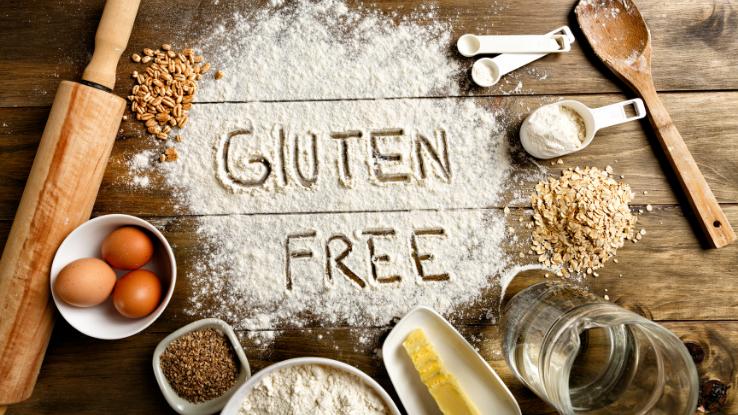High Fiber Low Carb Diet Plan Pdf

Gluten is a protein found in products derived from wheat, barley, and rye. It is well established that the consumption of gluten triggers the onset of the digestive disorder celiac disease. Starting and maintaining a gluten-free diet is the only way to effectively manage the symptoms associated with celiac disease. This diet regimen is also necessary for those suffering from a food allergy to wheat and wheat products.
Today, many people who are not diagnosed with celiac disease or a wheat allergy are still opting for gluten-free diets. Many believe that eating a gluten-free diet may help them lose weight, increase their energy, or ameliorate their headaches. However, the evidence for these associations is primarily anecdotal. In fact, researchers do not recommend following a gluten-free diet unless you have been diagnosed with celiac disease or have a gluten sensitivity (wheat allergy).
Nonetheless, maintaining a gluten-free diet can get complicated — and it may result in vitamin and nutrient deficiencies. To coincide with National Celiac Disease Awareness Day, we're providing a starting point for folks diagnosed with celiac disease and wheat allergies, so that they can maintain a balanced diet while accounting for their digestive health.
Foods To Avoid
To start a gluten-free diet, you must avoid foods and drinks containing the following:
- Wheat
- Bulgur
- Farina
- Graham flour
- Kamut
- Rye
- Semolina
Some commonly prepared foods can contain gluten:
- Bread
- Cakes and pies
- Cereals
- Cookies
- Crackers
- Oats
- Pasta
When consuming processed foods, it is essential to search for a label indicating gluten-free ingredients since gluten can also be found, rather unexpectedly, in prepared foods such as:
- Croutons
- Gravy
- Dressings
- Beers
- Imitation meats or seafood
- Processed luncheon meats
- Soups
- Candy
Moreover, gluten is not only found in edible products. It may also be found in the following products that are commonly found in your home. These include:
- Shampoo, conditioner, and styling products
- Lipstick and lip balms
- Medications and vitamins
- Play-dough
- Toothpaste
Essential Foods For A Gluten-Free Diet
The following is a list of grains and starches recommended for a gluten-free diet:
- Amaranth
- Buckwheat
- Corn
- Cornmeal
- Gluten-free flours (rice, soy, corn, potato, bean)
- Polenta
- Quinoa
- Rice
- Tapioca
Other great gluten-free foods include:
- Fruits
- Fresh meats, fish, and poultry
- Milk and most dairy products
- Potatoes
- Rice
- Vegetables
- Wine and distilled liquors
Moreover, an increasing number of gluten-free products, such as bread, pasta, beer, or brownies, are becoming available with gluten-free substitutes. These are often available at specialty grocery stores or online.
Pitfalls Of Gluten-Free Diet
Many grains are enriched with vitamins. Therefore, following a gluten-free diet may result in low levels of specific vitamins and nutrients. Some common deficiencies associated with a gluten-free diet include:
- Calcium
- Fiber
- Thiamin
- Riboflavin
- Niacin
- Folate
Your doctor or dietician may recommend supplements to increase your levels of these vitamins and nutrients.

Tips For Maintaining A Gluten-Free Diet
Strictly Shop Gluten-Free: While in the grocery store, try to avoid processed foods. Instead, buy products like fresh fruits, fresh vegetables, frozen produce, beans, nuts, seeds, fresh meat, fresh poultry, fresh or frozen seafood, eggs, dairy products, and fresh herbs. Additionally, choose gluten-free flour, rice or corn pasta, corn tortillas, and gluten-free bread.
Check Your Medications (and Other Non-Food Products) for Gluten: Gluten is often utilized in medicines to bind pills together. Ask your pharmacist or call the drug manufacturer directly to check if any of the medications you are taking contain gluten.
Maintain a Gluten-Free Zone in the Kitchen: Cross-contamination with gluten may occur where ingredients come together, such as on a cutting board or a grill surface. You can also be exposed to gluten by using the same kitchen utensils as others or sharing the same condiment containers — the condiment bottle may touch the bun, or a knife with bread crumbs may contaminate a margarine stick or mustard jar.
Be Careful When Dining Out: Some restaurants today may offer a gluten-free menu. If this is not the case, be sure to ask which items are gluten-free. Ideally, try looking for restaurants that operate gluten-free kitchens to avoid any chance of cross-contamination. Apps like Find Me Gluten Free can help you take extra care when choosing a restaurant.
Resource Links:
- "A Review on the Gluten-Free Diet: Technological and Nutritional Challenges" via Nutrients, U.S. National Library of Medicine
- "The Gluten-Free Diet: Fad or Necessity?" via Diabetes Spectrum, American Diabetes Association, U.S. National Library of Medicine
- "Health Benefits and Adverse Effects of a Gluten-Free Diet in Non–Celiac Disease Patients" via Gastroenterology & Hepatology, U.S. National Library of Medicine
- "Gluten-free diet: is it really always beneficial?" via Kare Publishing, U.S. National Library of Medicine
- "Navigating the Gluten-Free Boom: The Dark Side of Gluten Free Diet" via Frontiers in Pediatrics, U.S. National Library of Medicine
MORE FROM SYMPTOMFIND.COM
High Fiber Low Carb Diet Plan Pdf
Source: https://www.symptomfind.com/health/guide-creating-gluten-free-diet-plan?utm_content=params%3Ao%3D740013%26ad%3DdirN%26qo%3DserpIndex







Tidak ada komentar:
Posting Komentar